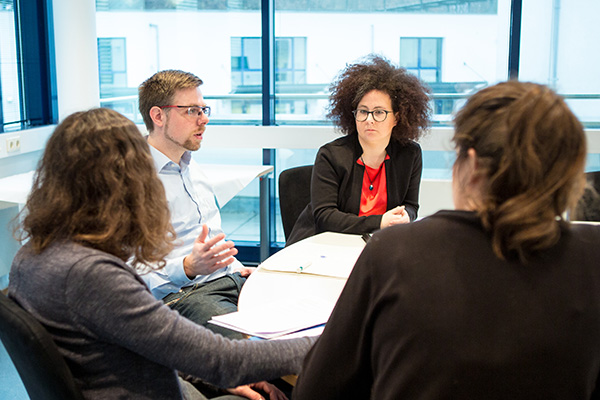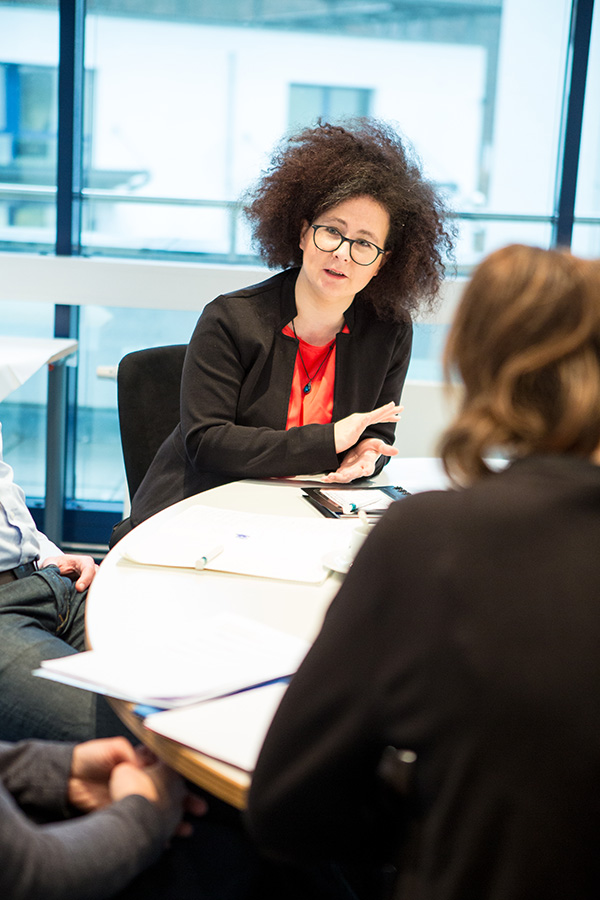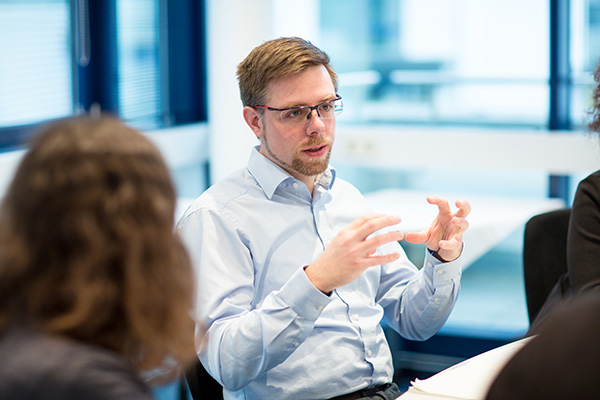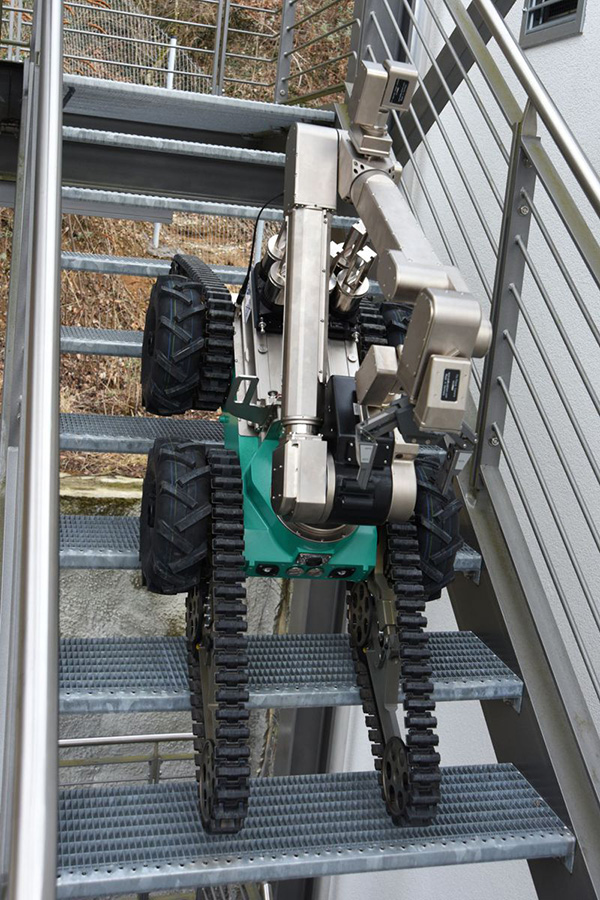Have you ever seen an application of this in real life?
Heusinger: No, and that is not planned either. We, as observers, would be a possible hindrance during such an incidence.
Moser: A little anecdote to that: At the LKA in Stuttgart, I was allowed to operate a disarming robot. As part of the experience, I had to steer it out of the room where I was, through two hallways and into a different room to look if there was something suspect on top of a closet. I thought I would be able to complete the task quite easily since I have a bit of experience with remote steering. 20 sweat-filled minutes later, I had just maneuvered the robot in front of the closet and yet, I still had to maneuver it to the correct position, which also took quite long. The orientation within the room is lost when you are working with only a few cameras on the robot itself. To think that in a real-life situation, a distance of perhaps 50 meters and maybe even hurdles such as stairs need to be dealt with, and that you might realize, for instance, that the robot is equipped with the wrong sensors, while each extra minute possible endangers lives and costs money – this makes one quite nervous. That is why it is crucial that the information gathered by the robot is easy to record and that the sensor control system is reliable. It is also important that the robot is properly equipped, so that it does not have to be brought back between tasks. From an engineering point of view, this is a very interesting aspect.
How is the bilateral and interdisciplinary cooperation with the various project partners working?
Heusinger: The partnership with Austria is advantageous since our technology standards as well as ethical and legal aspects are very similar. In that way, we complement each other very well.
Moser: This is what our cooperation is existing on. We coordinate with each other in regular meetings so that we are building upon each other’s findings and so that those findings are compatible. Regarding the overall assessment, the various project partners address different aspects. These include ethical and juridical questions regarding the framework conditions, the hardware integration or how to ensure for each respective technology that the necessary interfaces exist and are applicable on a robot and that the data is correctly compiled, saved and presented meaningfully. This is only possible via exchange and communication between partners.
Heusinger: It is exciting to think outside the box and gain new perspectives on the same topic from different research fields. Questions arise that you would not have thought to ask before, and you gain a lot of knowledge, not only in a subject specific or technological context.
How does international cooperation work in security research? Is there competition between the actors?
Moser: The greatest competition would have been the project IED Inspector. However, we integrated their results and experts into our project. In order to reach our goal of developing a useful tool for the end user, we wanted to get all relevant actors on board.
Heusinger: There is international cooperation and networking within security research, often in form of workshops or conferences. In March for example, I was at the Border Security Expo in London. Of course, information can only be exchanged to a certain extent. Nevertheless, cooperation in security research is strongly tied to trust and honesty. That is a key difference compared to other research areas.
How safe do you feel in public areas such as airports or train stations?
Moser: Our research has made us realize how important and challenging the tasks are which our security forces undertake on a daily basis, and how much effort is put into ensuring public security. I have great faith in these measures. For me, this boosts my personal motivation to do outstanding work. To answer your question directly: I am not afraid, as I can assess possible dangers and am less likely to panic.
Heusinger: Unfortunately, one cannot foresee and plan for everything. We have known that since 9/11. However, what we can see is how much research is performed. Especially the German Federal Ministry of Education and Research (BMBF) is investing a lot of money to look into the newest research questions and explore solutions for possible dangers. What can be done will be done, concerning security research.
What comes after the DURCHBLICK project?
Moser: The next step is to set the course for a sound application of the project so that from the demonstrator a product can be developed soon. Firstly, the end users should be able to use a system in a real scenario that is more powerful and efficient than the devices that are currently available. Secondly, our project partners, especially the SMEs, need to get the chance to commercially implement their work by participating in the production and selling of the new products – for example, an accessory device for a bomb disarming robot. For us at EMI, it is an exciting technological question how we can support the end users during the image processing using computer algorithms. Beyond that, upon completion of the project, our robot also could be used on our explosives testing ground in Kandern. Our operating personnel and explosive experts at EMI would certainly profit from that.
Heusinger: Besides, through the project we have been introduced to X-ray backscatter as a technology, which is still new to us. We now start developing ideas how we could implement this technology in other typical EMI research topics such as the visualization of cracks in buildings.
Read more




